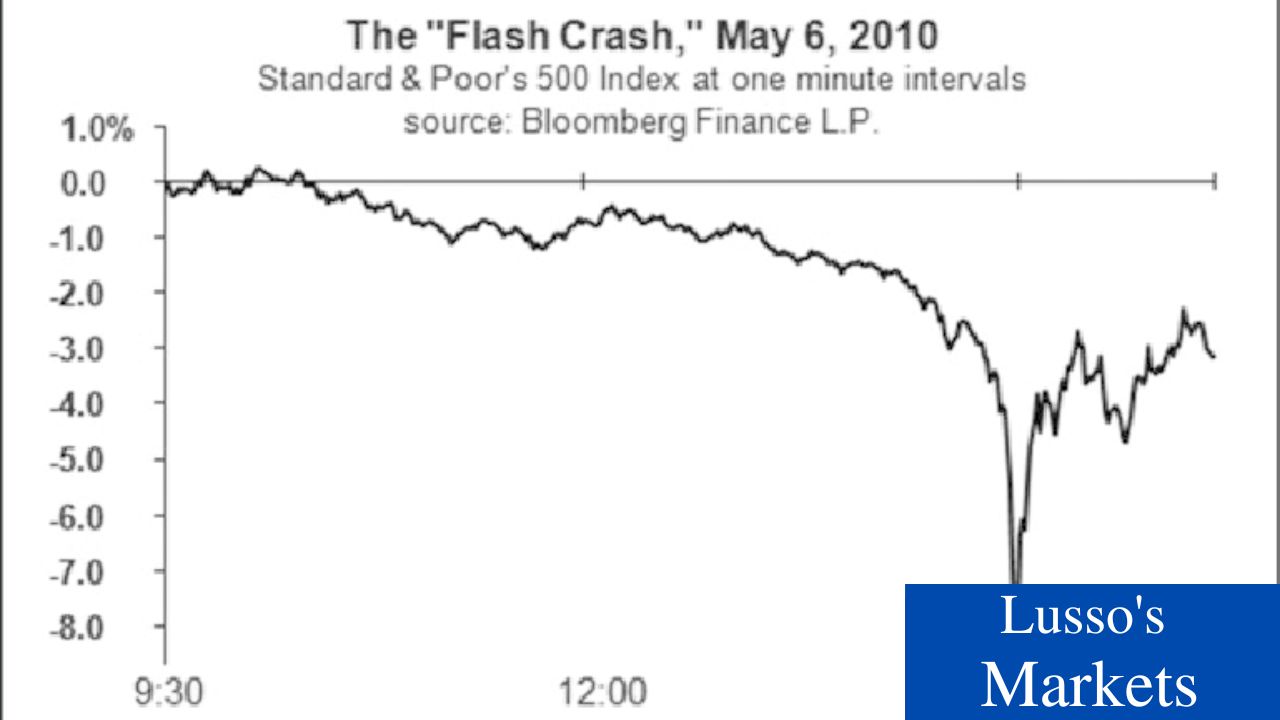Markets
Is Wish.com The Next Amazon?

*This article is intended for information purposes only. This is not advice. Authors and Contributors quoted may be buying or selling at any time. Trade at your own risk.
For many years investors and traders have looked for the stock that has potential of becoming the next Amazon or Apple. Participants of the stock market crave reward, they want big returns and everyone wants to get rich . Frankly, their is one specific industry group that has seen stocks present handsome returns for investors throughout the years and that industry group is retail-internet.

*Previous Returns From Retail-Internet Stocks
- FVRR : From the 2019 lows to the 2021 highs the stock ran over +1,800%
- VIPS: From the 2018 lows to the 2021 highs the stock ran over +860%
- CHWY: From the 2019 lows to the 2021 highs the stock ran over +430%
- MELI: From the 2019 lows to the 2021 highs the stock ran over +550% and ran over +23,000% since the 2009 lows (excluding any stock splits)
- W: From the 2020 lows to the 2021 highs the stock ran over +1,500%
This industry group has shown proven results time and time again. I am not speculating on that either, I am looking at the facts and reporting the facts and the fact are that some retail-internet stocks have presented life changing returns to investors.
*Full disclaimer, past returns are not a guide for future returns, trade/invest at your own risk.
Why Is ContextLogic [NASDAQ:WISH] Gaining Retail Traders Attention?
The San Francisco based company Contextlogic [NASDAQ:WISH] operates and provides online retail service at wish.com. The company recently went public under WISH on the NASDAQ back in 2020.
Since going public, the company is trading down over -60% from the highs and this has really caused the spark of interest from retail traders.
Dark Pool Activity
We reached out to Stefanie Kammerman whose nickname by her students is, “The Stock Whisperer” because of her ability to catch and find dark pool activity. She is the founder of The Stock Whisperer Trading Co, and also appeared today on Fox Business talking about dark pools.
Kammerman told us her opinion and what she was seeing on WISH, “The biggest Dark Pool prints I am able to see is at 11.15. It’s a 5 mil dollar trade.11.05 Another 5 mil trade, and 11.10 , another 5 mil. So I would only be bullish above 11.25 for $WISH”.
Revenue
Last quarter the company reported revenue increase of +75% for the quarter year-over-year. The CEO, Peter Szulczewski said on the companies conference call that revenue, “exceeded our expectations on both the top and bottom lines”.
The company last quarter saw their ProductBoost advertising business return to a year-over-year growth for the first time since 2019.
Szulczewski said, “This trend demonstrates renewed advertising spend for merchants as the economy starts to recover. It also indicates the strength in our platform as merchants benefit from increased sales, faster delivery times and lower refunds.”
The last 4 quarters the company has seen sales increase over +30%. As the company continues to report more stable growth numbers in the sales department it could potentially attract more demand to the stock.
I was able to speak with founder of Atlas Trading, *PJ Matlock who is a shareholder of WISH. He gave me his opinion on the company, “WISH is extremely undervalued in my opinion. I look at similar companies like Shopify, Ebay and Amazon and I believe WISH will be at least $50+ one day.”

OPINION: China Stocks, Beta and How Can This Help WISH?
The past few trading sessions investors have ran for the exit on their positions in China stocks due to the change of policy risk that could damage potential reward and growth.
Alibaba Group Holding (BABA)
Shares of the Hong Kong based company, BABA dumped over -15% in less than a week while seeing the stock trade over 50 million shares two days in a row. The stock trades a average volume of around 16 million shares a day.
JD.com (JD)
Shares of the China based company, JD dumped over -18% in about a week. Two of the days the stock traded volume near 40 million shares, which is high given the average volume per day on the stock is around 12 million shares.
Why Is This Important?
This is important in my opinion, because traders do not usually want a bunch of stock from the same industry group in their portfolio. With traders and investors who want exposure to the retail-internet industry but sold out of their BABA and JD shares they could possibly look into accumulating a position in WISH in my opinion. This is something to watch for after WISH reports earnings on August 12th.
As this is just speculation for the current moment, investors may have a hard time buying a stock that is up 500% from the 2020 lows and may prefer a stock like WISH, potentially.
The question I ask is, with the Covid-19 case count increasing going into the winter will investors who sold their BABA and JD shares sit in cash and risk missing out on a potentially high demand retail-internet industry from possibly moving higher due to more lockdowns?
Technical Analysis

*Jake Wujastyk, who is part of the Founding Team at TrendSpider and Mutli-Time Benizga show guest announced on twitter that he took a position in WISH.
He could be buying or selling at anytime or could have already sold but, he is actively been giving commentary on the chart of WISH on his twitter if you want to follow him @Trendspider_J.
To learn more about TrendSpider go to TrendSpider.com and grab a Free Trial.
UPDATE 8-2-21: Jake locked in a profit on the trade in the tweet above on WISH but continues to trade the stock while giving commentary on his twitter account. @TrendSpider_J

WISH Daily Chart Commentary
- The 50-day moving average (SMA) has been trading flat for around 2 weeks. In my opinion, if the price action can trade above and close above the 50-day SMA and the 50-day SMA can start to curl to the upside it could attract technical and momentum buyers potentially.
- The Daily MACD which is used as a momentum gage for technical traders is starting to near a bullish convergence. If it can bullishly converge then it could possibly attract momentum and technical buyers potentially causing the demand curve to shift to the right.
- The stock tried to break its down trendline resistance on June 20th but failed. After putting in a double bottom (for now) on June 27th around $8.90 it has broken out above a shorter term trendline.
Searching For A New CFO
At the end of June the company announced that their Chief Financial Officer (CFO), Rajat Bahri, notified the Board of Directors that he was going to resign from his position on July 23rd.
At this current time, Chief Accounting Officer, Brett Just and Director of FP&A Jennifer Oliver are serving as acting CO-CFO’s. The company is working with executive search firm, Heidrick and Struggles International to help identify a new CFO.
Going into winter it is critical in my opinion that WISH finds a CFO and a CFO with experience as well. We have seen GameStop (GME) most recently hire Chewy’s (CHWY) co-founder to lead GameStops shift to e-commerce and investors have reacted bullishly to this.
The question is, in a competitive industry, will WISH opt towards:
- Someone who is young and ambitious willing to take on more risk to seek higher reward?
- Someone with experience leading a high growth successful E-commerce business?
- Someone who is content not willing to take the risk needed to compete with the rest of the industry?
Bottom Line
The bottom line is the CFO matters. The CFO’s main job as a public company is to put shareholders first and by putting shareholders first they need to be aggressive and look at ways to grow the company while maintaining a healthy balance sheet.
As WISH drifts lower it could be due to that investors may not feel confident in the acting Co-CFO’s to take the appropriate investments during a low interest rate environment. Can you blame them though? It is a tough situation for the acting Co-CFO’s. Do they take the risk and and add investments while rates are low to expand the future of the company or do they play it content and just “get by” until a CFO is hired?
[mstock id=”3043″]
Follow the author on twitter: @ChartBreakouts
Contact us: info@lussosnews.com
*Previous returns are not a guide to future returns. Trade at your own risk.
Markets
The Most Shorted Stocks as of Late March 2024

DO NOT MISS THIS FREE OPPORTUNITY!
ARE YOU A TRADER?
DO YOU WANT FREE STOCK PICKS?
CHECK THIS OUT….
Ready to elevate your trading game with the next big winner? Don’t miss out – join the savvy investors who are already benefiting from our Wall St veteran’s free SMS alerts. Act now! Sign up at https://slktxt.io/ZmRx or send ‘FREE’ to 844-722-9743 and be the first to get the insider scoop on what’s hot in the market
Short selling is a strategy used by investors who believe that a stock’s price will decline, allowing them to buy it back at a lower price in the future. Market participants closely watch the most shorted stocks as they can be indicative of market sentiment or potential volatility. Based on the latest data from MarketWatch, here are the stocks with the highest short interest as of March 28, 2024.
1. IMAC Holdings Inc. (NASDAQ: BACK)
- Price: $3.30
- 1-Day Change: +6.80%
- Year-To-Date Change: +49.32%
- Short Interest: 880,148 shares
- Percent of Float Shorted: 93.92%
IMAC Holdings stands out with a massive 93.92% of its float being shorted, indicating significant bearish sentiment despite a strong year-to-date performance.
2. XTI Aerospace Inc. (OTC: XTIA)
- Price: $2.86
- 1-Day Change: +5.15%
- Year-To-Date Change: -49.11%
- Short Interest: 381,503 shares
- Percent of Float Shorted: 78.91%
XTI Aerospace has seen nearly 79% of its float shorted amidst a substantial decline in its stock price this year.
3. SunPower Corp. (NASDAQ: SPWR)
- Price: $1.96
- 1-Day Change: -8.41%
- Year-To-Date Change: -59.42%
- Short Interest: 39,254,967 shares
- Percent of Float Shorted: 76.64%
SunPower, a solar energy company, faces skepticism with over three-quarters of its float shorted following a sharp drop in its stock price.
4. BYND Cannasoft Enterprises Inc. (NASDAQ: BCAN)
- Price: $0.97
- 1-Day Change: +6.61%
- Year-To-Date Change: -98.50%
- Short Interest: 410,370 shares
- Percent of Float Shorted: 75.67%
BYND Cannasoft has witnessed an extreme decline in its price this year, coupled with a high short interest.
5. B. Riley Financial Inc. (NASDAQ: RILY)
- Price: $21.72
- 1-Day Change: +0.84%
- Year-To-Date Change: +3.48%
- Short Interest: 12,260,125 shares
- Percent of Float Shorted: 75.47%
B. Riley Financial appears more resilient, showing a positive year-to-date return, yet it still faces significant short pressure.
Other Notable Mentions:
- Biomea Fusion Inc. (NASDAQ: BMEA), Arbor Realty Trust Inc. (NYSE: ABR), and MicroCloud Hologram Inc. (NASDAQ: HOLO) also feature in the top 10 most shorted stocks, with short interests ranging from 41% to 48%.
Analysis:
Investors short sell stocks for various reasons, including speculation on price declines or hedging against potential downturns. The companies listed above are experiencing significant short interest, which could lead to price volatility, particularly if there is a sudden positive shift in their fundamentals, possibly leading to a short squeeze.
It’s essential for investors to conduct thorough research and consider multiple factors when investing in or short selling stocks, especially those with high short interest, as they can be particularly volatile.
Markets
Understanding a Flash Crash in the Stock Market

DO NOT MISS THIS FREE OPPORTUNITY!
ARE YOU A TRADER?
DO YOU WANT FREE STOCK PICKS?
CHECK THIS OUT….
Ready to elevate your trading game with the next big winner? Don’t miss out – join the savvy investors who are already benefiting from our Wall St veteran’s free SMS alerts. Act now! Sign up at https://slktxt.io/ZmRx or send ‘FREE’ to 844-722-9743 and be the first to get the insider scoop on what’s hot in the market
In the fast-paced world of finance, few events can instill as much immediate fear and confusion as a “flash crash.” This term describes an event where stock prices plummet sharply within an extremely short period—often just minutes—before often rebounding just as quickly. These rapid and dramatic movements can result in substantial market disruptions, affecting a wide range of assets including stocks, bonds, and commodities.

Origins of a Flash Crash
The concept of a flash crash became widely recognized after the most notorious example, which occurred on May 6, 2010. During this event, the Dow Jones Industrial Average fell about 1,000 points (over 9%) only to recover those losses within minutes. This sudden plunge and recovery highlighted inherent vulnerabilities in the market structures and systems.
Causes of Flash Crashes
Flash crashes can be triggered by a variety of factors, which often interact in complex ways:
- High-Frequency Trading (HFT): Many analysts attribute the rise of flash crashes to the increase in high-frequency trading, where firms use algorithms to execute millions of orders at lightning speed. These algorithms can sometimes create feedback loops if they start to sell off assets in a falling market, amplifying the initial decline.
- Market Structure Issues: The fragmentation of trading venues and the varying rules and technologies used by these platforms can also contribute to flash crashes. Disparities in trading rules and protocols can lead to situations where automated systems behave unpredictively or inefficiently.
- Liquidity Crunches: Flash crashes are often exacerbated by a sudden lack of liquidity. As prices begin to fall, automatic stop-loss orders can trigger further selling, but if there aren’t enough buyers, prices can drop precipitously.
- News and Social Media: Sometimes, an erroneous news report or a significant surge in social media activity can spur rapid trading actions by algorithms that parse news and data for trading signals.
Impact and Responses
The impact of a flash crash is broad. In the short term, investors can see huge losses, and confidence in the markets can wane. For traders, the volatility can result in significant financial damage, especially for those who are unable to react quickly enough to the abrupt price changes.
In response to flash crashes, regulatory bodies have implemented several measures to prevent or mitigate their effects. For example, after the 2010 crash, the U.S. Securities and Exchange Commission (SEC) introduced “circuit breakers” that temporarily halt trading in a stock if its price drops too quickly.
Preventative Measures
Beyond regulatory changes, there’s also a push for improved risk management strategies within trading firms, especially those employing high-frequency trading algorithms. These measures include more sophisticated and robust systems to monitor and control trading activities and improved testing of algorithms to ensure they behave as expected during market stress.
The Ever-Evolving Market Dynamics
As markets evolve and the use of technology deepens, the potential for flash crashes remains significant. This necessitates continuous advances in both technology and regulation to safeguard against the risks posed by these rapid and unpredictable market events.
Understanding flash crashes is crucial for anyone involved in the trading world, from regulators and traders to ordinary investors trying to navigate the complexities of modern financial markets. Recognizing the signs and potential triggers of flash crashes can help market participants better prepare for and potentially avoid the risks associated with these startling events.
Markets
A Glimpse Into the Buzz of Upcoming IPOs in April 2024

DO NOT MISS THIS FREE OPPORTUNITY!
ARE YOU A TRADER?
DO YOU WANT FREE STOCK PICKS?
CHECK THIS OUT….
Ready to elevate your trading game with the next big winner? Don’t miss out – join the savvy investors who are already benefiting from our Wall St veteran’s free SMS alerts. Act now! Sign up at https://slktxt.io/ZmRx or send ‘FREE’ to 844-722-9743 and be the first to get the insider scoop on what’s hot in the market
The investment atmosphere is heating up with a series of intriguing initial public offerings (IPOs) set to hit the market in late April 2024. This month features a diverse lineup of companies poised to go public, ranging from technology innovators to international restaurant chains. Here’s a detailed look at some of the most anticipated IPOs.
Tungray Technologies Inc. (TRSG)
Exchange: NASDAQ Capital
Price: $4.00
Shares: 1,250,000
Expected IPO Date: 4/19/2024
Offer Amount: $5,000,000
Tungray Technologies is stepping into the public market with a modest offer amount. The company’s focus on innovative tech solutions might attract investors looking for new growth opportunities in the tech sector.
RanMarine Technology B.V. (RAN)
Exchange: NASDAQ Capital
Price: $5.50
Shares: 1,435,000
Expected IPO Date: 4/19/2024
Offer Amount: $9,076,375
RanMarine Technology, known for its advanced marine technology solutions, is also set for the same date. With a slightly higher offer amount, it shows potential for considerable market interest.
Sushi Ginza Onodera, Inc. (ONDR)
Exchange: NYSE MKT
Price Range: $7.00-$8.00
Shares: 1,066,667
Expected IPO Date: 4/19/2024
Offer Amount: $9,813,336.40
Offering a culinary twist to the IPO scene, Sushi Ginza Onodera is preparing to serve not just premium sushi but also potentially premium stock value.
mF International Ltd (MFI)
Exchange: NASDAQ Capital
Price Range: $4.00-$5.00
Shares: 1,560,000
Expected IPO Date: 4/22/2024
Offer Amount: $8,970,000
This global firm is entering the market with a flexible price range, suggesting a cautious yet optimistic approach towards investor reception.
YY Group Holding Ltd. (YYGH)
Exchange: NASDAQ Capital
Price Range: $4.00-$5.00
Shares: 1,500,000
Expected IPO Date: 4/22/2024
Offer Amount: $8,625,000
YY Group is another promising prospect with its roots in technology and digital transformation, aiming to capture the tech-savvy investor’s eye.
Key Mining Corp. (KMCM)
Exchange: NYSE MKT
Price: $2.25
Shares: 4,444,444
Expected IPO Date: 4/25/2024
Offer Amount: $11,499,999.80
Diving into natural resources, Key Mining is set for a significant offering, indicating robust investor confidence in its mining operations and commodity potential.
Marex Group plc (MRX)
Exchange: NASDAQ Global Select
Price Range: $18.00-$21.00
Shares: 15,384,615
Expected IPO Date: 4/25/2024
Offer Amount: $371,538,447
As one of the heaviest hitters this month, Marex Group plc commands attention with its substantial offer amount, reflecting its established market presence and investor trust.
Rubrik, Inc. (RBRK)
Exchange: NYSE
Price Range: $28.00-$31.00
Shares: 23,000,000
Expected IPO Date: 4/25/2024
Offer Amount: $819,950,000
Rubrik stands out with a massive offer, targeting tech investors interested in data management and cloud services, marking it as one of the blockbuster listings of the month.
Loar Holdings, LLC (LOAR)
Exchange: NYSE
Price Range: $24.00-$26.00
Shares: 11,000,000
Expected IPO Date: 4/26/2024
Offer Amount: $328,900,000
Loar Holdings is geared up to make a significant impact with its sizable offer, highlighting its robust positioning in the manufacturing sector.
ZenaTech, Inc. (ZENA)
Exchange: NASDAQ Capital
Expected IPO Date: 4/30/2024
Offer Amount: $7,100,900
Wrapping up the month, ZenaTech will test waters with a strategic focus on tech innovations, appealing to niche investors keen on cutting-edge technologies.
April 2024 is shaping up to be a dynamic month for the IPO market, showcasing a wide range of sectors and opportunities. Investors are advised to keep an eye on these dates and delve deeper into each company’s prospects before making investment decisions. Each of these companies presents unique opportunities and challenges, marking another exciting chapter in the financial markets.
-

 Markets3 months ago
Markets3 months agoThe AI Revolution: How Super Micro Computer (SMCI) Skyrocketed in the Tech Rally
-

 Markets3 months ago
Markets3 months agoMastering the Market: A Guide to the Fundamentals of Value Investing
-

 Lusso's Exclusives2 months ago
Lusso's Exclusives2 months agoWall Street Veteran Owns A Crap Ton Of Monday.com Stock [NASDAQ:MNDY]
-

 Trading3 months ago
Trading3 months ago3 Must-Watch AI Stocks in 2024: Unveiling ShiftPixy, C3.ai, and CXApp’s Market Potential
-

 Business3 months ago
Business3 months agoDeciphering HSBC Holdings plc’s Fiscal Landscape: An In-depth Analysis of 2023’s Outcomes
-

 Markets3 months ago
Markets3 months agoPlus500 Ltd’s Financial Overview: A Glimpse into 2023’s Performance
-

 Markets1 month ago
Markets1 month agoBoeing’s Proactive Measures Ahead of Whistleblower Hearing
-

 Markets2 months ago
Markets2 months ago[BREAKING NEWS] ShiftPixy (PIXY): Poised for Explosive Growth with Strategic Acquisitions and $100 Million Financing
-

 Lusso's Exclusives3 months ago
Lusso's Exclusives3 months agoTop Stocks to Watch Tomorrow: LQR, NVDA, SMCI, and HOLO
-

 Markets1 month ago
Markets1 month agoUnitedHealth Group Demonstrates Resilience in Q1 2024 Financial Report
-

 Markets2 months ago
Markets2 months agoFisker Inc.’s Abrupt End to Automaker Talks Sparks Industry Speculation




























Pingback: Three Stocks Under $10 To Watch This Week | Lusso's News